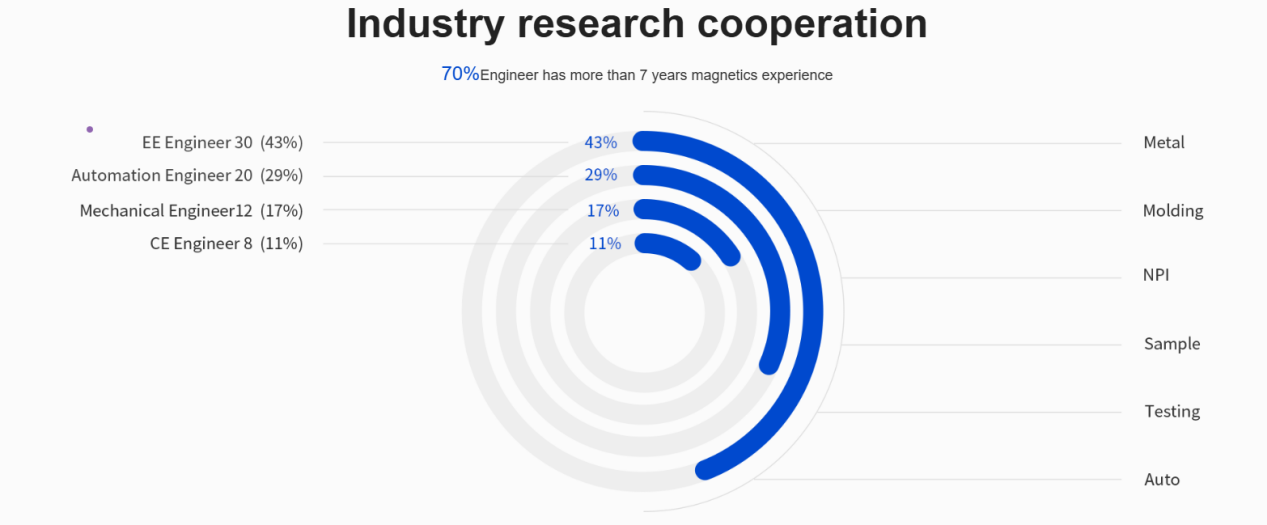Automotive Transformers in High-Voltage Fast-Charging EVs: Challenges & Solutions (2025 Update)
The arrival of the era of high-voltage fast-charging electric vehicles marks a crucial transformation in the new energy vehicle industry. At the core of this trend is the increasing adoption of high-voltage platforms (usually 800V electric vehicle systems) by automakers to achieve significantly faster charging speeds and higher overall efficiency.
Many well-known automotive brands, such as Porsche, Audi, BYD, XPENG, Mercedes-Benz, BMW, Volkswagen, NIO, and Hyundai, are actively deploying in this field. This global trend has driven the upgrade of requirements for automotive parts. High-voltage ultra-fast charging technology poses higher performance and safety requirements for automotive transformers.
This article will delve into the expanding electric vehicle(EV) and automotive transformer markets, highlighting their global significance, recent challenges, and the positive directions of cooperation with automotive accessories.

What Does the Market Data Tell Us? (Latest 2025 Update)
According to the Global EV Outlook 2025 report released by the International Energy Agency(IEA), global electric car sales reached 17 million in 2024, a year-on-year increase of about 25%, accounting for over 20% of the global automotive market. It is estimated that global EV sales will exceed 20 million in 2025, accounting for more than a quarter of total new vehicle sales[1]. This astonishing growth rate has presented significant development opportunities for the automotive transformer market.
According to market research data, the automotive transformer market was valued at $6.5 billion in 2024 and is projected to reach $9.8 billion by 2033[2]. This strong growth is primarily driven by the demand for high-voltage, fast-charging technology (for electric and hybrid vehicles), which imposes more stringent requirements on batteries, motors, and power devices than ever before. Automotive transformers play a crucial role in maximizing energy distribution and minimizing power loss, serving as indispensable core components in automotive power systems.
Factors Driving the Rapid Growth of the Automotive Transformer Market:
1. The wave of EVs.
2. Technological advancements and further demand for high-voltage ultra-fast charging, etc.
3. The continuous improvement of the electrification level of modern vehicles.
What is a Transformer in Automotive?
Functions
Fundamentally, an automotive transformer is an electrical device used to step up or step down voltage in a vehicle's electrical system. This basic function is crucial for managing the flow of electrical energy, ensuring that various components and systems receive the correct voltage for optimal performance and safety. Initially, one might think that automotive transformers are simply voltage converters for the power system. However, they play a broader and more integrated role in vehicles. This includes not only the propulsion system but also the infotainment system, lighting system, safety system, other auxiliary components, and even external charging infrastructure.
Automotive transformers can be understood as "energy bridges" that enable the integration and safe operation of various electrical systems within a vehicle.
Types of Automotive Transformers
1. Step-up Transformers: Increase the voltage, which is crucial for powering components that require a higher voltage.
2. Step-down Transformers: Reduce the voltage to a safe and usable level, providing the correct voltage for various vehicle systems.
3. Isolation Transformers: Provide electrical isolation between circuits, enhancing safety and reducing noise.
 Mentech’s auto electronics solutions
Mentech’s auto electronics solutions
Higher Technical Requirements for Automotive Transformers in the Era of High-Voltage Ultra-fast Charging
The combined application of various automotive transformers enables the complex electrical architecture of EVs. In the era of high-voltage, fast charging, automotive transformers may face numerous technical challenges and trade-offs in cooperation. It is recommended to explore mature solutions or the latest cooperation partners in the following directions:
1. Higher Insulation and Voltage Withstand Capability
As the battery voltage rises to 800V EVs or even higher (such as NIO's 900V platform), automotive transformers require significantly enhanced insulation and voltage-withstand capabilities. This is crucial for electrical isolation, which can not only protect low-voltage digital control equipment from the influence of high-voltage components but also ensure user safety.
2. Lower Energy Loss and Higher Efficiency
In EVs, efficiency is crucial as it can maximize the driving range and minimize heat generation. Automotive transformers must exhibit lower energy losses to improve the overall efficiency of the vehicle.
The energy losses in transformers mainly come from two aspects: copper loss (I²R loss caused by the ohmic resistance of the windings, converting electrical energy into heat) and iron loss (due to hysteresis and eddy current effects in the magnetic core).
3. Miniaturization and High Integration
In EVs, with the integration of more advanced functions and larger batteries, space and weight have become the primary considerations. This strongly drives the demand for miniaturized and highly integrated automotive transformers. However, smaller components may also lead to an increase in energy and transistor density, resulting in higher internal operating temperatures. This requires innovative designs that can effectively manage heat within a compact size.
4. Excellent Heat Dissipation and Wide Temperature Adaptability
The high power density in compact automotive transformers generates a large amount of heat. It must be effectively dissipated to prevent performance degradation, shorten the lifespan, and ensure safety.
5. Electromagnetic Compatibility and Anti-interference Capability
EVs are complex electrical environments with numerous high-power switching components (such as inverters and motor controllers), which generate significant electromagnetic interference (EMI). As a key part of these systems, automotive transformers must have strong electromagnetic compatibility (EMC) and anti-interference capabilities to ensure the stable operation of sensitive electronic devices.
6. Higher Safety and Reliability Standards
The "higher safety and reliability standards" for automotive transformers are not just regulatory hurdles but also the basic prerequisite for large-scale popularization and public trust. Any failure can lead to serious consequences. Therefore, robust design, strict testing, and compliance with international standards (IEC, IEEE) are non-negotiable.
Mentech's Innovative Practices in Automotive Transformers

As the automotive industry rapidly develops towards electrification and high-voltage ultra-fast charging, the role of advanced automotive transformers has become increasingly crucial. Mentech is committed to collaborating with automotive innovators to provide reliable, efficient, and compact magnetic components to power the next generation of EVs.
Mentech has a global manufacturing center covering an area of 82,000 m², equipped with intelligent automation facilities. A professional team of over 300 R&D experts ensures the continuous development of cutting-edge solutions, including automotive transformers, for the evolving automotive market.
For detailed specifications of automotive accessories and cooperation opportunities, please visit the official Mentech website or contact us directly.
FAQs
1. How does the rise of electric vehicles impact the automotive transformer market?
The rapid popularization of EVs has greatly promoted the growth of the automotive transformer market. With the increasing demand for high-voltage battery management and complex electrical systems in EVs, the market scale continues to expand. It is expected to maintain an annual compound growth rate of about 6% in the next few years[2].
2. How do automotive transformers, in turn, drive the rapidly growing modern automotive market?
In turn, automotive transformers ensure the stable operation of EV power systems and on-board electronic devices through efficient voltage conversion and electrical isolation, improve the overall vehicle performance and endurance, and drive the rapid development of the modern automotive market.
3. What recent innovations have there been in automotive transformers?
The latest technologies of automotive transformers can be explored in these directions: high-performance materials (such as silicon carbide and gallium nitride), intelligent power transformers with Internet of Things (IoT) functions, miniaturization, and high-integration design.
References:
[1] https://www.iea.org/reports/global-ev-outlook-2025
[2] https://www.marketresearchintellect.com/product/global-automotive-transformer-market/
[3] https://www.chinabaogao.com/detail/750794.html
[4] https://www.marketresearchintellect.com/blog/from-roads-to-revolution-the-expanding-automotive-transformer-market-and-its-impact-on-modern-cars/
[5] https://file.iyanbao.com/pdf/c1bfe-a44dea95-9b59-4ff0-8be3-ac17587587e3.pdf













